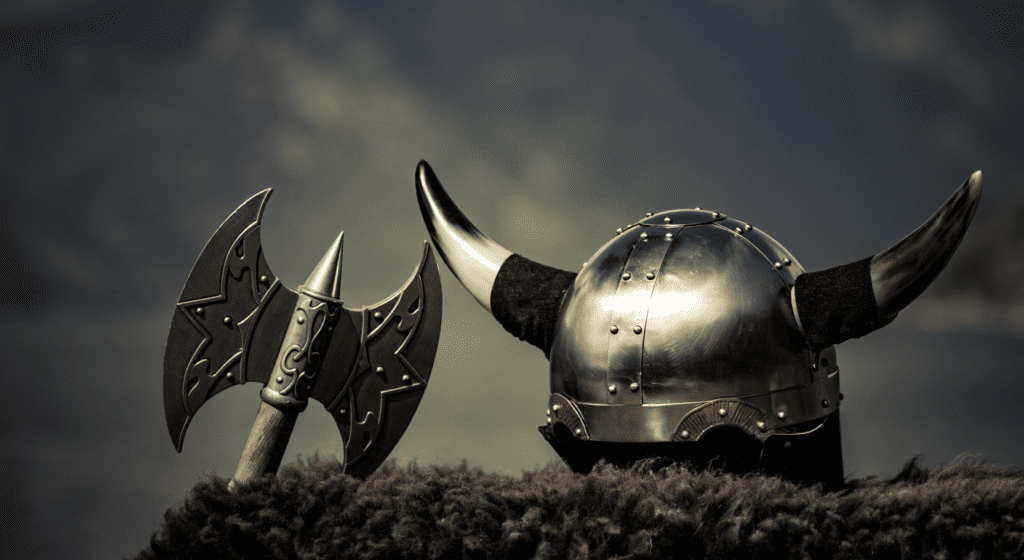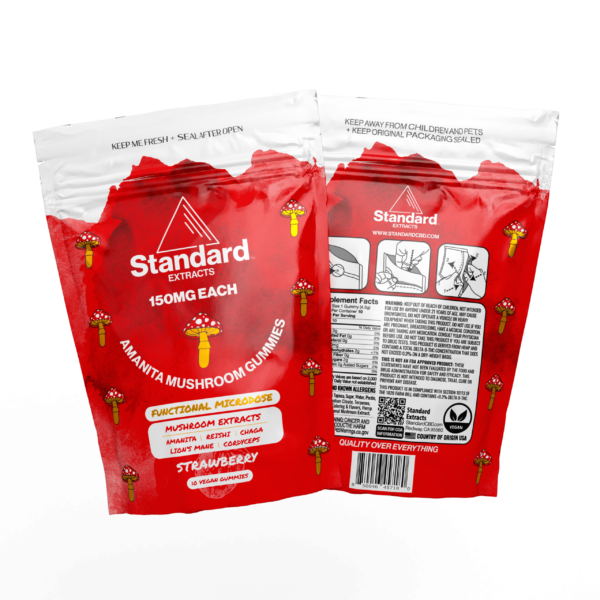The Legend of Viking Berserkers and Amanita Muscaria

Imagine a battlefield in the Viking age: the clash of steel, the roar of warriors, and amidst it all, the berserkers. These legendary Viking warriors were renowned for their ferocious fighting style, seemingly impervious to pain and fear. But what fueled their legendary fury? A tale as old as the sagas suggests an unusual source: the Amanita Muscaria mushroom, a vibrant red-and-white toadstool steeped in myth and mystery.

| Section | Main Focus | Key Points |
|---|---|---|
| Viking Berserkers and Amanita Muscaria | Introduction to the Topic | Exploration of the legend linking Viking berserkers to Amanita Muscaria mushrooms. |
| Viking Knowledge of Natural Substances | Environmental Connection | Discussion on Vikings’ use of natural substances, including psychoactive fungi. |
| Psychedelics in Viking Culture | Archaeological Evidence | Insights into the use of psychedelics in Viking rituals and burials. |
| Berserkers in Battle | Anecdotal and Cultural Evidence | Analysis of berserkers’ use of Amanita Muscaria in warfare and its effects. |
The Berserker Myth: Unraveling the Legends and Accounts

The image of the berserker is one shrouded in legend and mystery. These warriors, often depicted as invincible and frenzied in battle, are said to have tapped into a primal rage. But beneath the surface of these legends lies a complex tapestry of historical accounts, folklore, and the enigmatic role of the Amanita Muscaria mushroom.
Early Norse literature provides glimpses into the world of berserkers. Descriptions vary, but common themes emerge: warriors who could channel an almost supernatural strength and endurance. Yet, the historical accuracy of these accounts is often debated, leading scholars to explore various explanations for the berserker phenomenon.
Interpreting Berserker Rage
Was berserker rage a psychological state, a cultural ritual, or induced by substances like Amanita Muscaria Mushrooms? This question lies at the heart of our exploration. Theories range from psychological conditions to the use of mind-altering substances, each offering a different lens through which to view these legendary warriors.
The Amanita Muscaria mushroom, with its hallucinogenic properties, emerges as a compelling candidate in this mystery. Could this mushroom have been the key to unlocking the berserkers’ trance-like fury?
Scientific Scrutiny: Examining the Evidence for Amanita Muscaria Use

The quest to understand the enigmatic relationship between Vikings and the Amanita Muscaria mushroom takes us into the realm of scientific exploration. Amanita Muscaria, commonly known as fly agaric, has long been recognized for its distinctive appearance and potent psychoactive properties. Modern science has unraveled the chemical composition of this iconic mushroom, shedding light on its potential effects on the human mind.
Psychoactive Compounds: Ibotenic Acid and Muscimol

The Amanita Muscaria mushroom has special compounds called ibotenic acid and muscimol that change how your mind works. When you eat the mushroom, ibotenic acid changes into muscimol, especially if the mushroom is dried or cooked.
Muscimol is the main reason the mushroom affects your mind. It works on parts of the brain called GABA receptors. GABA is like a brain traffic controller; it helps keep brain activity in check. When muscimol connects with GABA receptors, it makes GABA work even better, slowing down brain activity. This can make you feel different things, from euphoria to delirium.
Amanita Muscaria Functional Mushroom Gummies
Introducing our premium Amanita Muscaria Mushroom Gummies, rigorously lab-tested to guarantee exceptional quality and purity. With 150mg of pure Amanita Muscaria extract in each gummy, you can expect a consistently potent experience. These gummies provide a legal way to unwind and relax, offering a unique mental escape. Made with premium Amanita Muscaria extract for a…
The Viking Berserker Connection
Understanding the chemical properties of Amanita Muscaria provides a scientific basis for exploring the potential connection between the mushroom and Viking berserkers. The effects of muscimol on GABA receptors may have contributed to the berserkers’ legendary trance-like states and fearlessness in battle.
In our quest to unravel the mysteries of Amanita Muscaria and its role in Viking culture, we must consider both the scientific insights and the rich tapestry of historical accounts and cultural context. It’s a journey that invites us to explore the boundaries of science, history, and mythology, all in pursuit of a deeper understanding of the Viking berserkers and their legendary fury.
Analyzing the Hallucinogenic Effects
The hallucinogenic effects of Amantia Muscaria are well-documented in other cultures. These effects range from euphoria and altered perception to delirium and mental clarity. Could such effects have been sought after or even harnessed by the Vikings in battle?
The exploration of Amanita Muscaria’s role in Viking culture extends beyond the battlefield into the rich tapestry of Norse mythology and shamanistic practices.
In Norse mythology, the Amanita Muscaria mushroom held a place of mystical significance. Its vivid appearance and psychoactive effects may have linked it to deities and the spiritual world. Unraveling these connections offers insights into the cultural and religious landscape of the Viking era.
Shamanism, with its deep roots in Norse culture, often involved entering altered states of consciousness to interact with the spiritual realm. The potential use of Amanita Muscaria in such rituals aligns with its known hallucinogenic properties, suggesting a possible role in these ancient practices.

100% Amanita Muscaria Mushroom Gummies
Challenges in Proving or Disproving Use
Determining whether Vikings used Amanita Muscaria (fly agaric) presents significant challenges due to limited archaeological evidence and the interpretive nature of historical texts. Despite these challenges, insights into Viking culture suggest a deep understanding of natural psychoactive substances.
The Vikings, known for their deep connection with nature, extensively foraged herbs, fruits, and fungi, many of which served medicinal or intoxicating purposes. This rich tradition of utilizing natural substances highlights their intimate knowledge of their environment. Archaeological findings reveal that psychedelics played a role in Viking rituals and warfare, with dried mushrooms found in Viking burials across Sweden and Norway, suggesting their use in spiritual and combative contexts.
The presence of specific mushroom varieties, such as Amanita muscaria and Amanita pantherina, in Viking graves implies their ceremonial consumption, potentially even before battles. This aligns with tales of Viking berserkers, who were said to consume dried caps of Amanita muscaria, inducing a trance-like state conducive to their legendary fearlessness in combat. The muscimol in these mushrooms, known for its impact on the brain’s GABA receptors, might have played a role in enhancing the berserkers’ combat focus and pain tolerance.
Furthermore, the Vikings’ use of stinking henbane (Hyoscyamus niger), a psychoactive herb discovered in Viking burial sites, also suggests its potential in inducing altered states of mind. This herb could bring about delirium, loss of inhibition, and nerve numbness, traits that would have been advantageous in battle, making the warriors less aware of injuries and more detached psychologically, thus amplifying their fighting capabilities.
Ready to start your own Viking quest with our Amanita Muscaria gummies? Try them today and experience this intriguing adventure firsthand.
Amanita Muscaria Functional Mushroom Gummies
Introducing our premium Amanita Muscaria Mushroom Gummies, rigorously lab-tested to guarantee exceptional quality and purity. With 150mg of pure Amanita Muscaria extract in each gummy, you can expect a consistently potent experience. These gummies provide a legal way to unwind and relax, offering a unique mental escape. Made with premium Amanita Muscaria extract for a…
Conclusion: Vikings, Amanita Muscaria, and the Enduring Enigma
Our investigation into the legendary use of fly agaric by Viking berserkers reveals a fascinating intersection of history, mythology, and science. This journey through the past, enriched with archaeological discoveries and cultural insights, has unearthed more questions than definitive answers.
Studies have shown that Vikings had a deep understanding of nature and used psychoactive substances, as seen in archaeological findings. The discovery of Amanita muscaria mushrooms in Viking graves, along with stories of their use in preparing for battle, suggests they played a significant role in Viking rituals and warfare.
The exact link between Viking berserkers and Amanita Muscaria isn’t clear-cut, but cultural and mythological evidence points to a likely connection. The effects of muscimol in Amanita muscaria resemble the behaviors of berserkers described in Norse sagas. Overall, this connection highlights the complexity of Viking history and culture, reminding us of the diverse interpretations in historical studies. For more detailed information, be sure to check out our complete guide on Amanita Muscaria.




